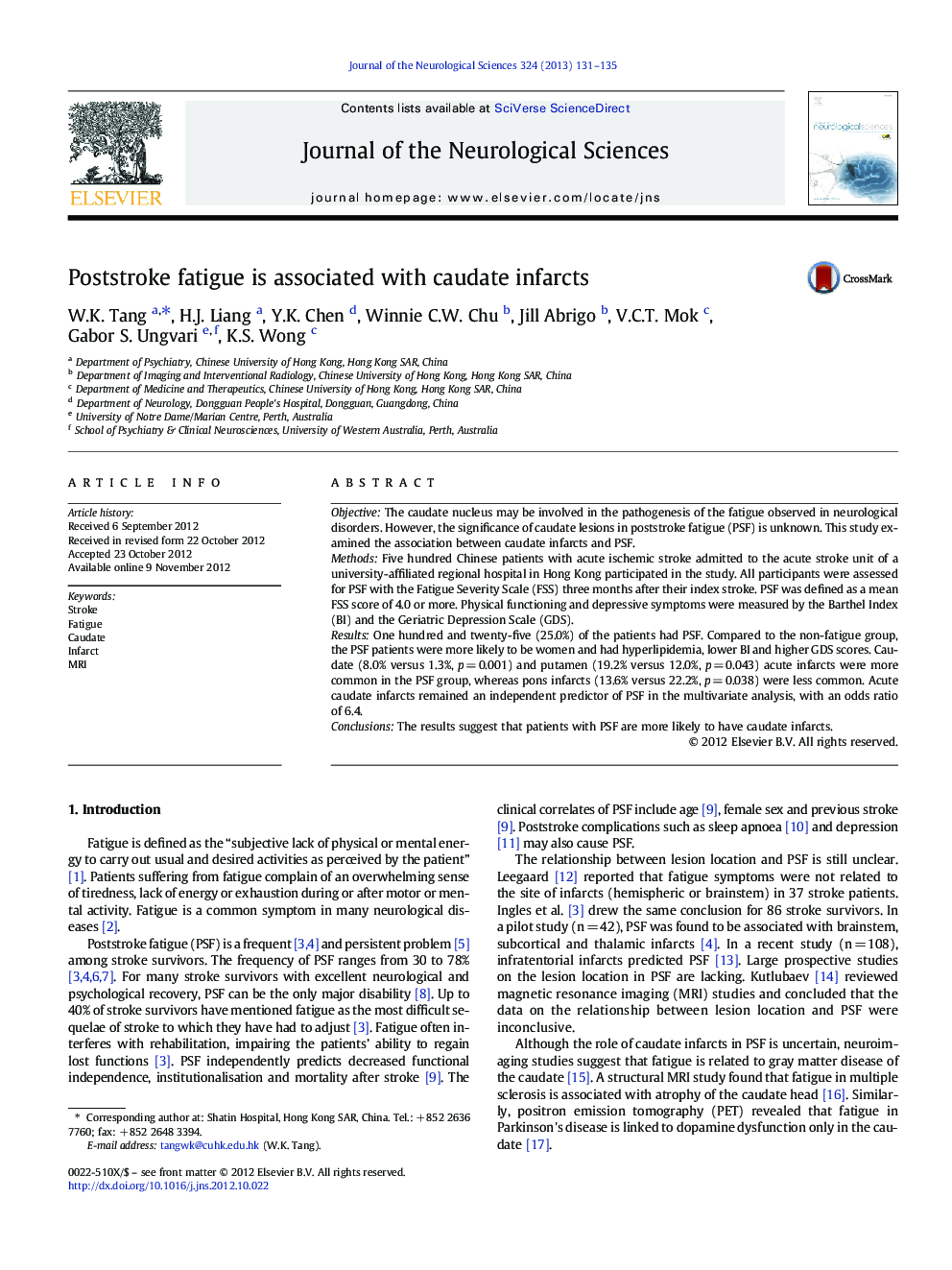| Article ID | Journal | Published Year | Pages | File Type |
|---|---|---|---|---|
| 1913934 | Journal of the Neurological Sciences | 2013 | 5 Pages |
ObjectiveThe caudate nucleus may be involved in the pathogenesis of the fatigue observed in neurological disorders. However, the significance of caudate lesions in poststroke fatigue (PSF) is unknown. This study examined the association between caudate infarcts and PSF.MethodsFive hundred Chinese patients with acute ischemic stroke admitted to the acute stroke unit of a university-affiliated regional hospital in Hong Kong participated in the study. All participants were assessed for PSF with the Fatigue Severity Scale (FSS) three months after their index stroke. PSF was defined as a mean FSS score of 4.0 or more. Physical functioning and depressive symptoms were measured by the Barthel Index (BI) and the Geriatric Depression Scale (GDS).ResultsOne hundred and twenty-five (25.0%) of the patients had PSF. Compared to the non-fatigue group, the PSF patients were more likely to be women and had hyperlipidemia, lower BI and higher GDS scores. Caudate (8.0% versus 1.3%, p = 0.001) and putamen (19.2% versus 12.0%, p = 0.043) acute infarcts were more common in the PSF group, whereas pons infarcts (13.6% versus 22.2%, p = 0.038) were less common. Acute caudate infarcts remained an independent predictor of PSF in the multivariate analysis, with an odds ratio of 6.4.ConclusionsThe results suggest that patients with PSF are more likely to have caudate infarcts.
